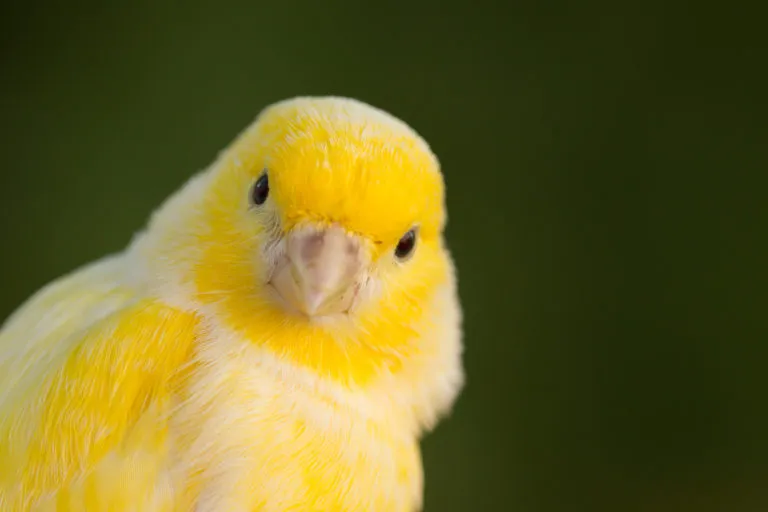Canaries are generally considered to be very easy-to-keep pets, as they will take care of themselves if provided with all of the necessary facilities, including a birdbath, perches and cuttlebones. However, from time to time a canary will also need your help.
It all depends on the correct care
Bath day!
If your canary steers clear of bathing itself, then you will need to get involved on a regular basis to ensure plumage does not get too dirty. A simple way to do this is to fill a flower-spritzer with lukewarm water and spray your canary until it is wet through, which will result in vigorous shaking and coat care. However, be sure to clean particularly soiled areas with a sponge.
Moulting
The annual moulting season runs for about eight weeks from midsummer and can be a tiring time for your canary, resulting in less singing and more resting! Daily bathing is now even more important, helping to promote spring changes. Twice a day, pour fresh lukewarm water into your bird’s bath to make splashing around even more enjoyable! Make sure that your feathered friend is not exposed to draughts when wet, as birds can catch cold just as we can.
Your canary requires a varied diet, including a moulting supplement that can be purchased to provide additional minerals and vitamins that your bird needs. An extra bowl insert can be handy for offering your bird small quantities at a time. Fresh greens can also be great for a canary’s daily diet, as well as dandelions.
Scales change too
It is not only your canary’s feathers that go through a yearly change – the legs and feet also change. In older animals, or when regular bathing is not kept up, layers of dry skin can accumulate and leave the surface thick and flaky. A warm footbath can help with removing older pieces of talon. If you want to take extra special care of your feathered housemate, you can gently massage the legs and feet around three times a year using a skin cream with oil, or a limestone leg ointment, with special bird varieties available in good pet stores. Bear in mind that if your canary’s legs quickly return to looking flaky and scaled, your pet could be infested with mites, in which case you should visit the vet as soon as possible.
Talon care
You will need to cut your canary’s talons as soon as they get too long, to prevent difficulties with walking, stumbling over its own feet and getting caught in railings or causing injury. This is best done by taking your canary in one hand, holding the foot between your index finger and thumb and holding it up to the light. You will be able to see the areas of the talon that have a blood supply – these should be avoided! Simply clip the tip of the talon, being sure to leave a clear piece of talon and keeping to the natural shape as much as possible. If you accidentally cut the quick, use haemostatic cotton from a pharmacy to stem the flow.
Beak care
In some canaries, only half of the beak grows or the upper section of the beak can become too long. The beak must then be trimmed to ensure your bird can still eat easily. It is not an easy job, as the beak is hard and you must be careful not to damage the tongue, and if you are planning to do this yourself you should first be shown how to do it by your vet.
If your canary is well cared for, it will bring a great deal of happiness and enjoyment to your life with its cheerful nature and joyful singing!
